My Works
See My Works Which Will Amaze You!
I have worked on a variety of projects, ranging from data analysis to software development. Here are some of my most recent projects that I have worked on. I have also included a brief description of my role in each project, as well as the technologies I used.
-
IoT-Based Water Tanker Management System
Project Overview
The IoT-Based Water Tanker Management System is an innovative solution designed to automate water monitoring, tanker ordering, and delivery management. The project integrates IoT devices, cloud computing, and mobile technology to create a smart and efficient water management ecosystem. The system continuously measures water level, temperature, and humidity using sensors like the Ultrasonic Sensor and DHT11, ensuring accurate environmental monitoring.
All collected data is sent to AWS IoT Core, where it is processed and stored in a secure cloud database. A React Native mobile application allows users to monitor their water tank in real-time and place tanker orders when the water level is low. Once an order is placed, the React-based admin portal receives it, assigns it to an available driver, and tracks delivery progress. The driver application (also built with React Native) helps drivers receive delivery instructions, confirm completion, and keep records synchronized with the cloud. The backend is powered by Node.js.
This system eliminates the need for manual monitoring and reduces communication gaps between users, administrators, and delivery teams. It serves as a scalable, real-world example of how IoT and cloud technology can improve daily utilities and resource management.
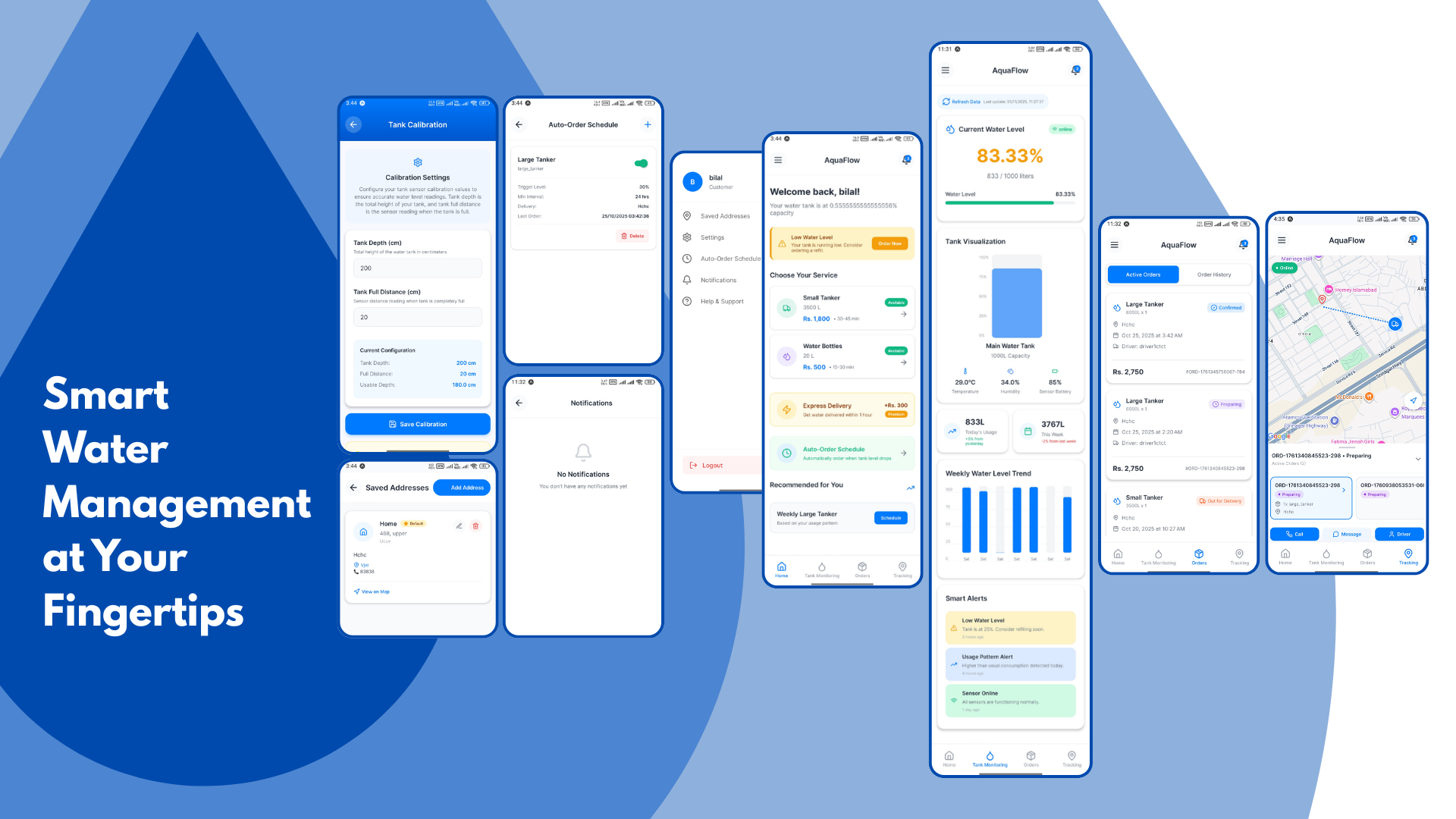
Mobile App for Customers
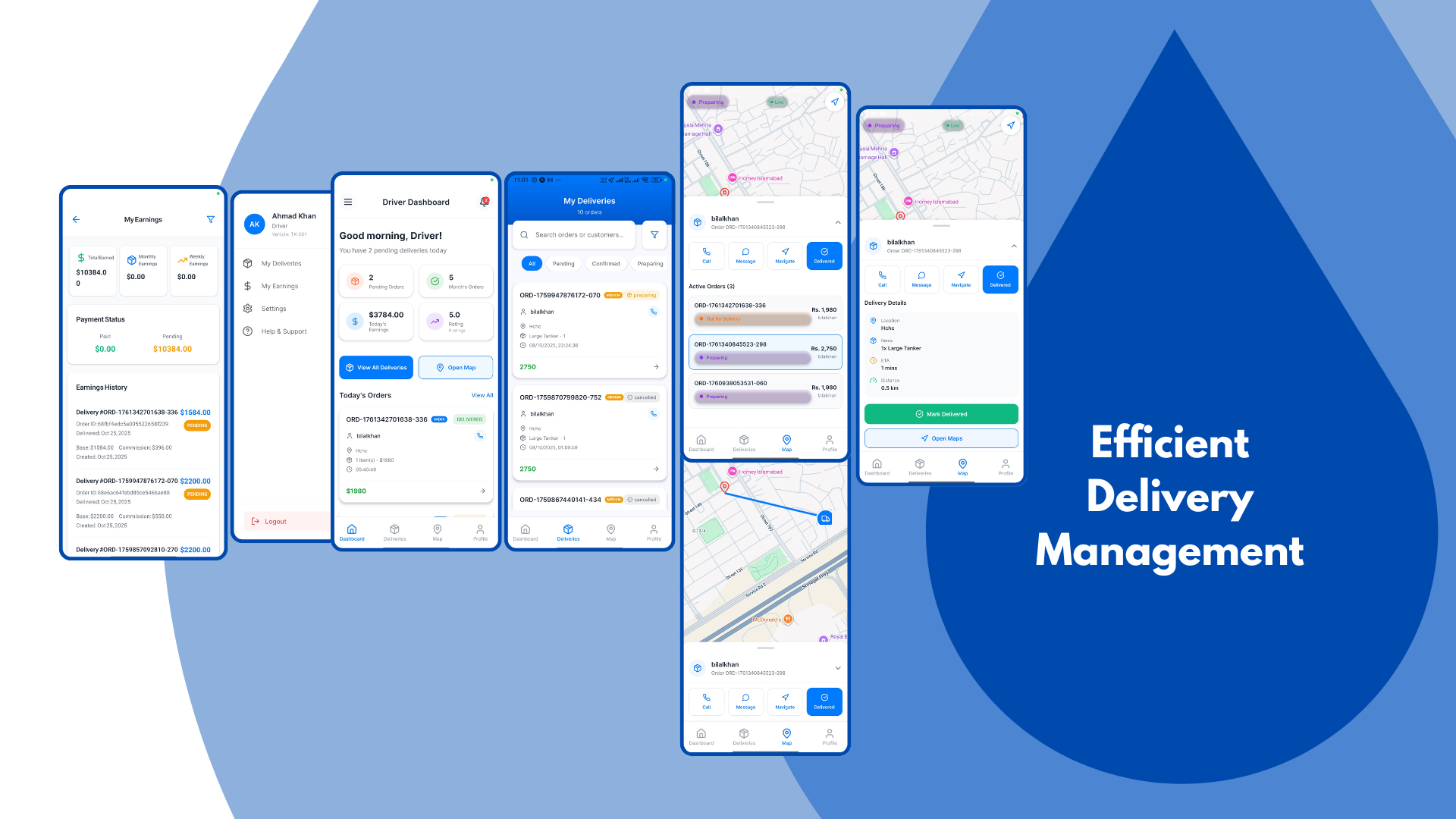
Mobile App for Drivers
Key Features
- Real-Time Monitoring: Continuously tracks the water level, temperature, and humidity using IoT sensors.
- Cloud Connectivity: Utilizes AWS IoT Core and MQTT protocol for seamless data transfer to the backend.
- User-Friendly Mobile App: Displays current tank water level and environmental data, and allows users to order tankers instantly.
- Admin Management Panel: Provides complete control for administrators to view all orders, assign drivers, and monitor deliveries.
- Driver Application: Helps drivers receive delivery details, navigate to locations, and update delivery status in real time.
- Database Integration: All sensor data, orders, and delivery records are stored in a structured and secure database.
- Notifications: Alerts users when the water level drops below a set threshold, suggesting when to order a tanker.
Technologies Used


How It Works
- Sensing: The ESP32 reads data from the Ultrasonic Sensor (for water level) and DHT11 (for temperature and humidity).
- Communication: The IoT device sends this data to AWS IoT Core using MQTT protocol.
- Data Storage: The backend receives the data and stores it in a MongoDB database for future analysis.
- User Interface: The mobile app fetches this data from the backend, displaying real-time tank levels and environmental readings.
- Order Placement: When the water level is low, the user can place a tanker order directly from the app.
- Admin Control: The admin portal receives the order, checks driver availability, and assigns the delivery task.
- Delivery Execution: The driver app displays the assigned order, delivery address, and allows status updates (e.g., on the way, delivered).
- Data Synchronization: All updates are synced in real-time across cloud, admin, and user dashboards.
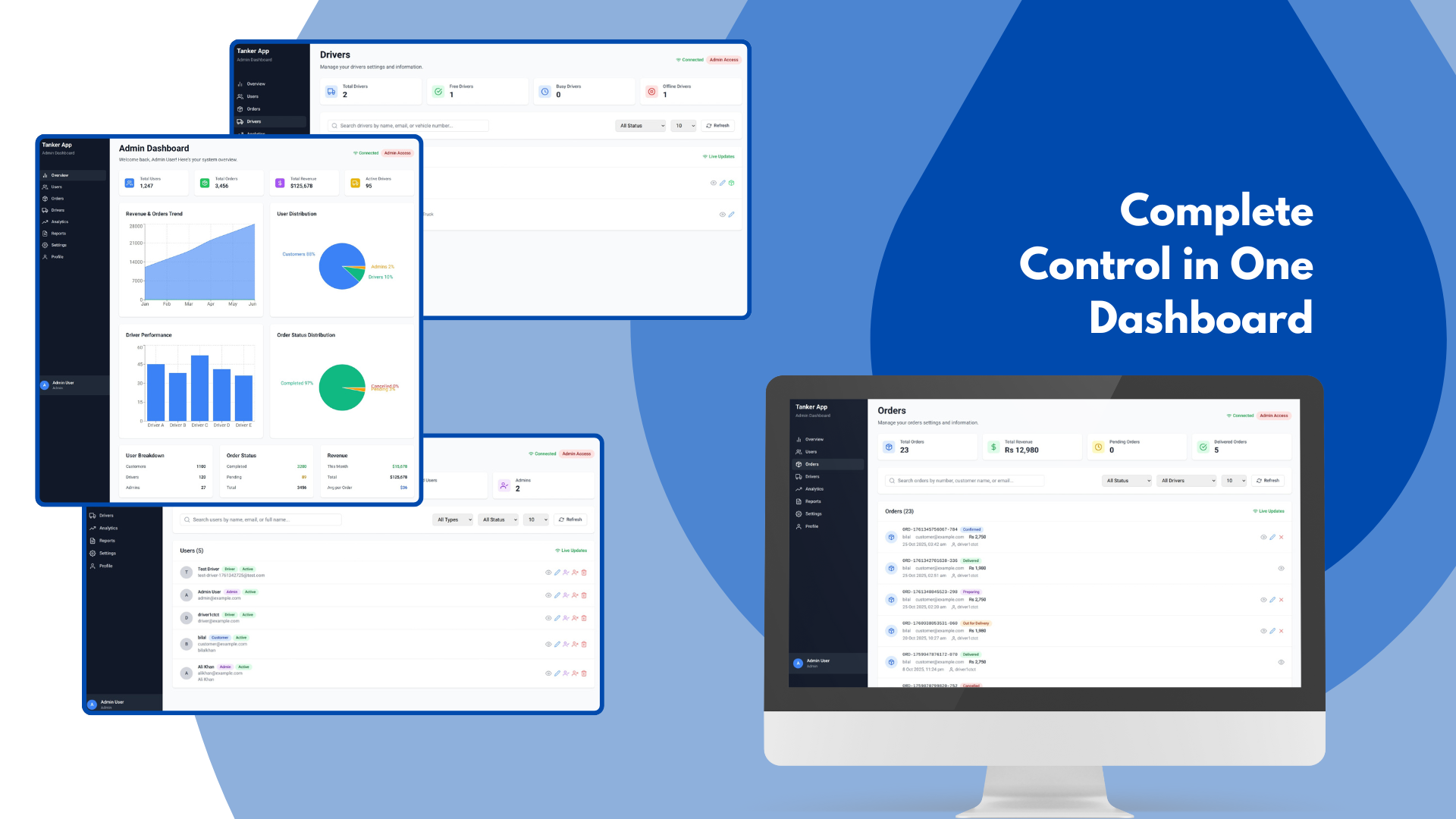
Web Dashboard for Admin
Benefits
- Automation: Eliminates manual tank checks and phone-based ordering.
- Efficiency: Streamlines order management and delivery scheduling.
- Transparency: Keeps users, admins, and drivers connected in one system.
- Data Insights: Enables analysis of water usage trends and delivery patterns.
- Scalability: Supports multiple devices and users for large-scale deployments.
- Sustainability: Encourages smart water usage and reduces wastage.
This system demonstrates the power of IoT and cloud technology in solving real-world problems. By automating water management, it not only saves time and effort but also promotes efficient resource utilization and sustainability.
-
Precision Farming Robot
Project Overview
The Precision Farming Robot project explores the use of automation for weed management in farming. As an early prototype, it demonstrates the basics of weed detection and targeting. The project aims to reduce labor and herbicide usage, while laying the groundwork for more advanced agricultural robotics. The robot uses a camera to capture images of the surrounding environment, and basic image processing techniques to identify weeds. A laser pointer is then used to target the detected weeds, simulating weed elimination. The robot's movement is controlled via a desktop application, and data is exchanged through the MQTT protocol. This project highlights the potential of automation in agriculture, and future developments will focus on integrating AI for better weed detection, improving navigation, and adding more advanced sensors.

Precision Farming Robot
Key Features
- Automated Weed Detection: Uses basic image processing techniques to detect weeds in a controlled environment.
- Targeting Mechanism: A laser pointer targets detected weeds for simulation of weed elimination.
- Controlled Navigation: The robot's movement is controlled via a desktop application within a limited environment.
- Modular Design: Easy to update and extend with new features, such as AI or better navigation.
- Decentralized Control: Independent control of each module, simplifying the design and development process.
Technologies


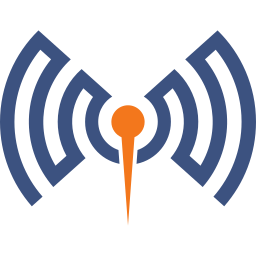





Benefits
- Weed Detection: Introduces automated weed detection as a proof of concept for more efficient farming methods.
- Labor Reduction: Aims to reduce manual labor for tasks like weed monitoring and elimination.
- Herbicide Reduction: By targeting weeds directly, the robot can reduce the need for herbicides, promoting sustainable farming practices.
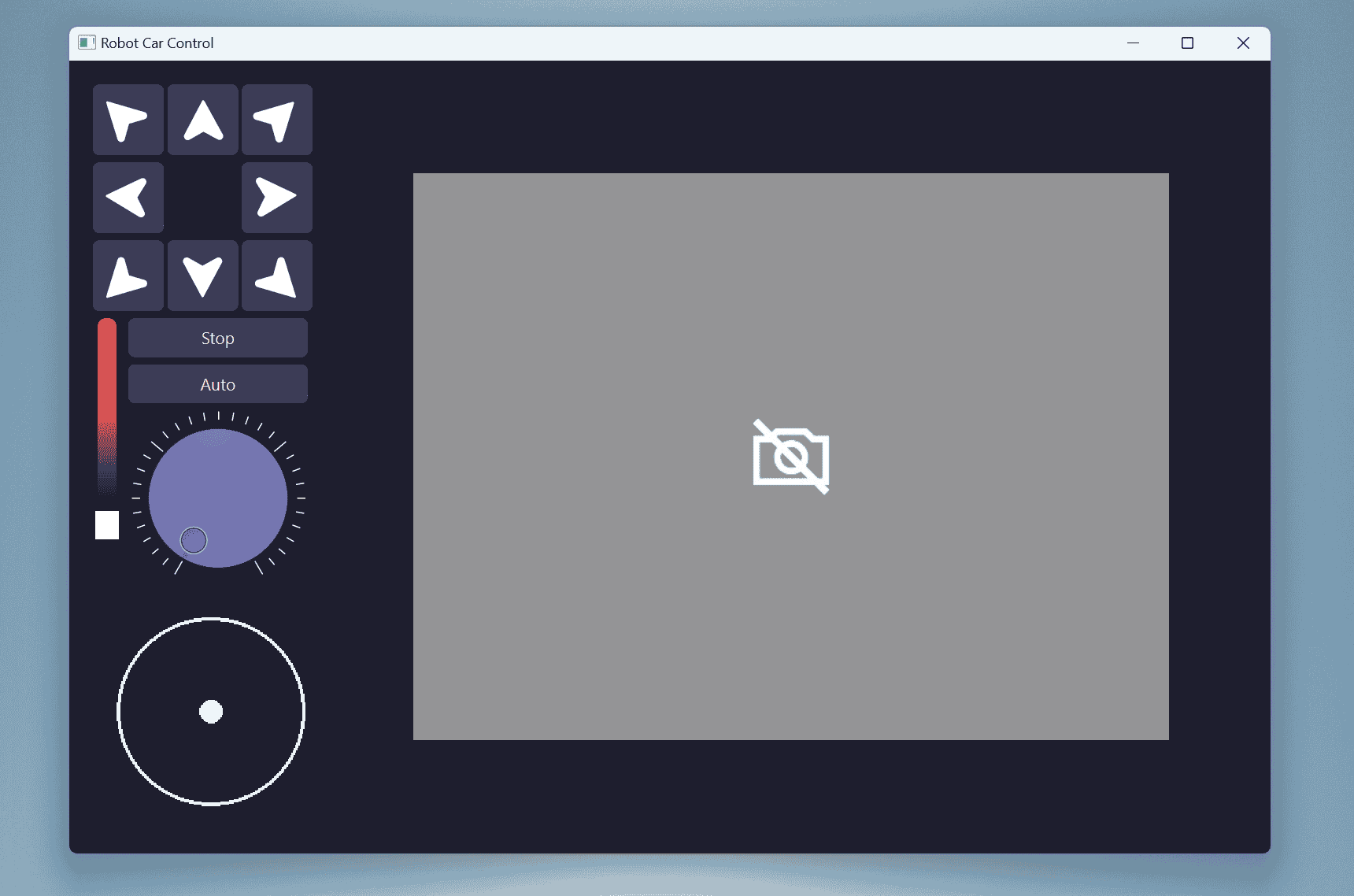
Precision Farming Robot Application
How It Works
The robot uses a camera to capture images of the surrounding environment. Basic image processing identifies weeds, and the robot moves to target them. The laser pointer is controlled by a servo motor for precise targeting. The robot is controlled via a desktop application, and data is exchanged through the MQTT protocol. This early prototype focuses on demonstrating the potential of automation in weed management and will be developed further in future versions.
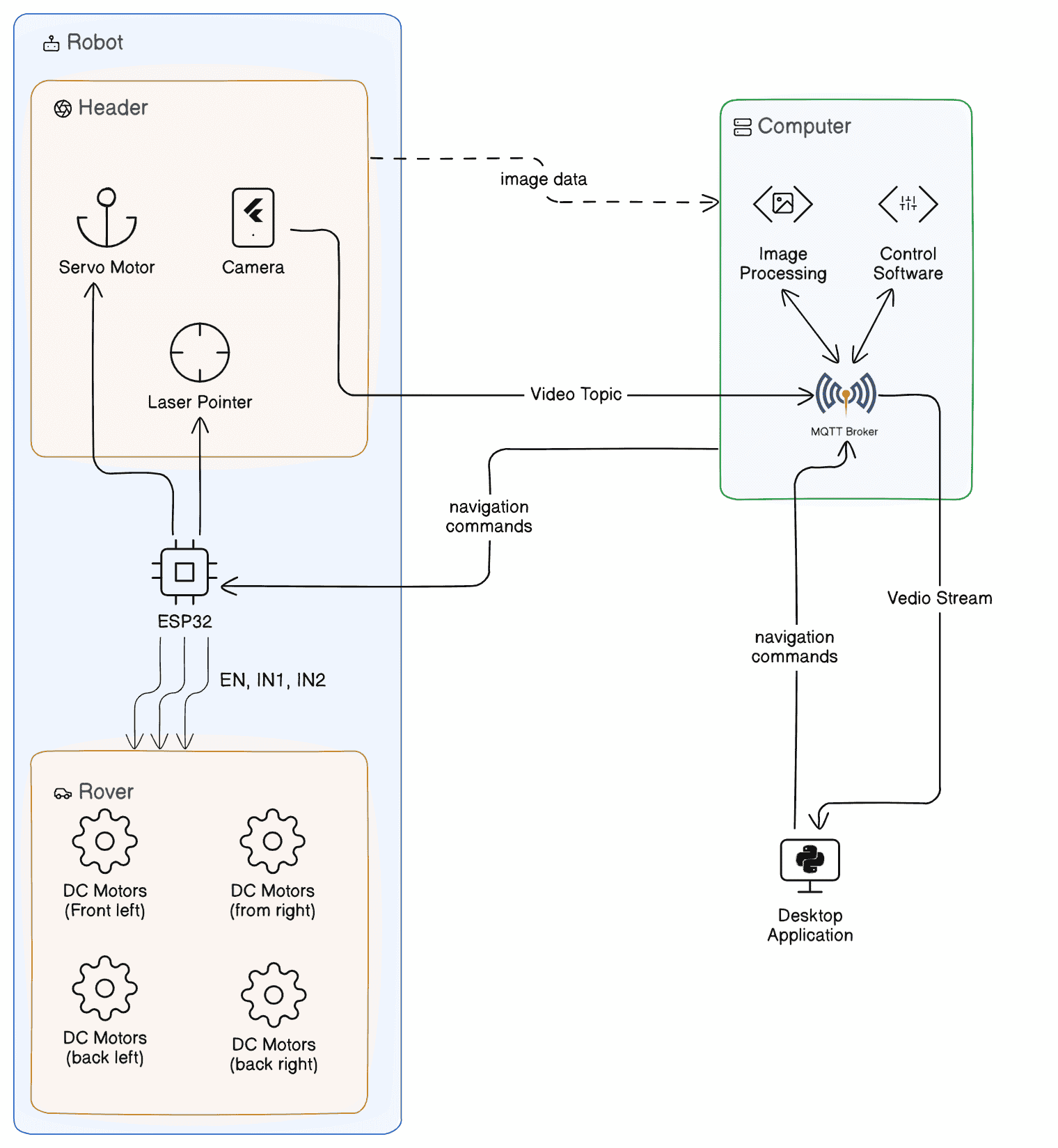
Precision Farming Robot Architecture
Challenges & Future Plans
- AI Integration: Future development will incorporate machine learning algorithms to enhance weed detection accuracy. The goal is to enable the robot to distinguish between weeds and crops in complex environments and automatically adjust its targeting strategy based on factors such as plant size and growth stage.
- Improved Navigation: Future versions will integrate GPS and advanced path-planning algorithms, allowing the robot to autonomously navigate large agricultural fields. Obstacle detection and avoidance systems will be implemented to ensure efficient operation in challenging terrains, providing a robust solution for field coverage.
- Scalability: The modular design will be further developed to handle larger systems for industrial-scale farms. The aim is to build a fleet of smaller robots that can work together autonomously, providing an efficient solution for larger farms while reducing the need for human supervision.
- Advanced Sensors: Future iterations will include additional sensors, such as thermal cameras or hyperspectral imaging, to enhance weed detection under various lighting conditions and improve precision in identifying specific types of weeds or other potential crop threats.
- Data Analytics: The robot will be integrated with cloud-based systems to collect and analyze data on weed density, soil conditions, and crop health. This data can be used to generate reports and insights for farmers, enabling better decision-making and fostering data-driven farming practices.
- Sustainability: Renewable energy sources, such as solar panels, will be incorporated to make the robot more energy-efficient and sustainable, minimizing the carbon footprint of its operations.
- Collaboration with Farmers: Future work will involve close collaboration with farmers to fine-tune the robot’s design and functionality. Gathering feedback from real-world users will be crucial to ensure the robot is adaptable and can meet the unique challenges of different types of farms.
This first prototype is just the beginning, and the development of new features is underway. With future improvements, the robot has the potential to revolutionize weed management in agriculture, making farming more sustainable and efficient.
-
FlashMind
Project Overview
FlashMind is an AI-powered learning platform built with Next.js, Firebase, OpenRouter (LLM API), Tello, and Clerk for authentication. It transforms learning through smart flashcards, personalized quizzes, and concept understanding using AI. Designed for both casual learners and serious students, it combines productivity tools with active recall strategies to enhance memory and performance. Users can create, edit, and organize flashcards, while AI suggests topics, adjusts difficulty, and generates quizzes based on weak areas.

FlashMind AI-Powered Learning
Key Features
- AI-Generated Flashcards: AI creates flashcards from uploaded study materials, perfect for quick review and memorization.
- Study Streaks: Track your progress with daily streaks and long-term learning achievements.
- AI-Generated Quizzes: Personalized quizzes are created based on your weaknesses to strengthen your knowledge.
- Download Cards: Allow user to download Flashcards, allowing for flexible learning on the go.
- AI Recommendations: Get suggestions for topics to study based on your past performance and activity.
- Collaborative Flashcards: Share and collaborate on flashcards with others to enhance group learning.
- Dark Mode: Enable dark mode for a more comfortable study experience during late-night sessions.
- AI Chatbot Assistance: Get instant help from the AI chatbot to clarify concepts and boost learning efficiency.
Technologies


How It Works
FlashMind allows users to paste study materials such as notes or textbooks, which the AI analyzes to create personalized flashcards and quizzes. The AI tracks your performance, schedules spaced repetition reviews, and adjusts the difficulty based on how well you’ve mastered the content. Users can also share flashcards with others, collaborate on study sessions, and keep motivated with daily streaks. Authentication is powered by Clerk, ensuring secure access and personalized profiles.
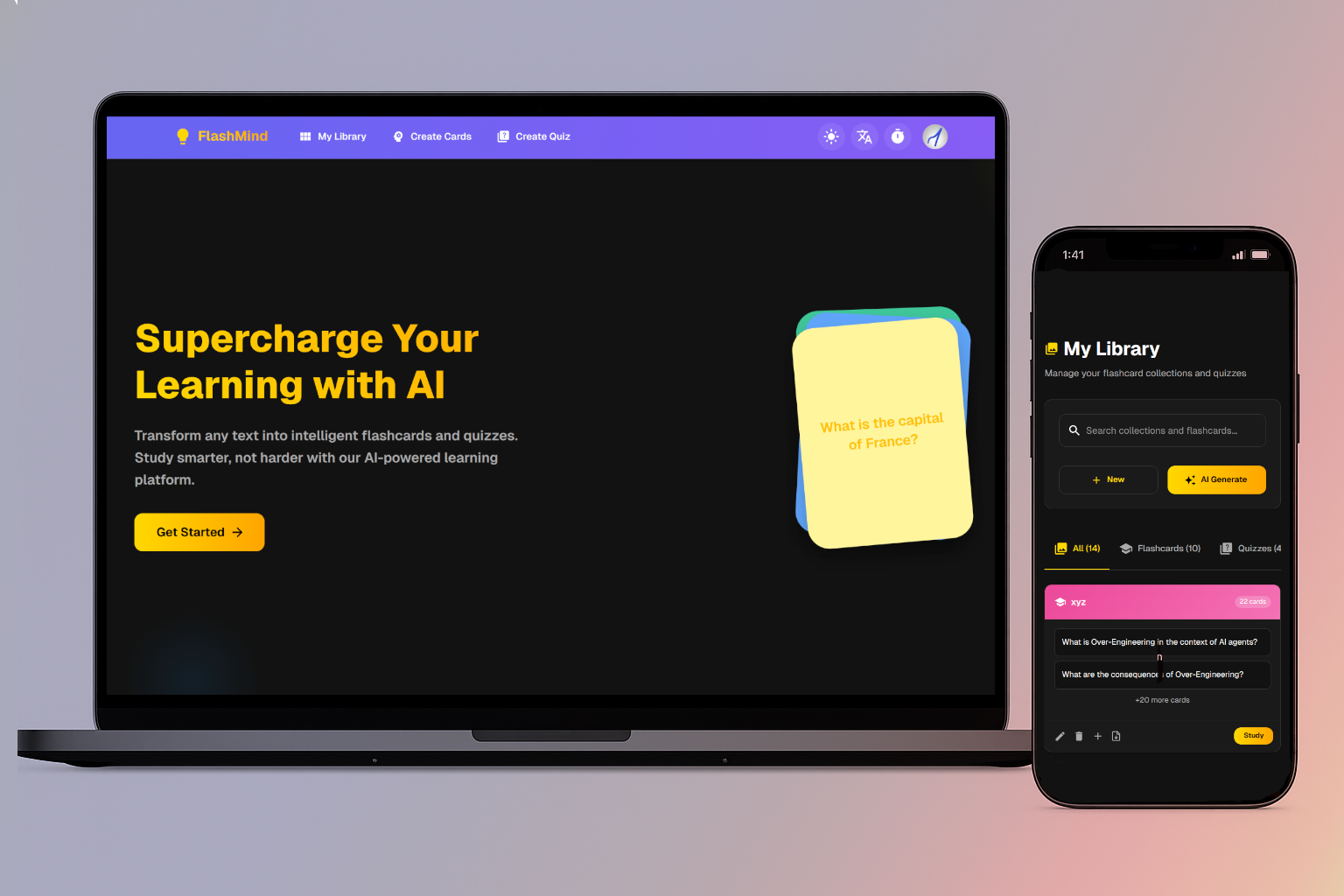
FlashMind Application
-
IoT Plant Monitoring System
Project Overview
I'm excited to share my IoT Plant Monitoring System—a project born from my passion for technology and plant care. Using an ESP32 microcontroller, this system tracks key health indicators like humidity, temperature, and soil moisture, and sends the data to the cloud via AWS IoT Core. It's all about using tech to make plant care smarter and easier!
Key Features
- Real-Time Monitoring: Stay updated on your plant's health around the clock.
- Cloud Integration: Access your data from anywhere, anytime, with AWS IoT Core.
- Accurate Time Sync: Precise data logging with NTP server synchronization.
- Precise Data Collection: Using DHT11 and soil moisture sensors for accurate readings.
Technologies



Benefits
- Smart Plant Care: Real-time insights for keeping your plants healthy and happy.
- Remote Access: Monitor your plants wherever you are.
- Reliable Records: Accurate, time-stamped data for peace of mind.
How It Works
- Data Collection: Sensors gather real-time data on plant conditions.
- Data Transmission: Sends data to AWS IoT Core using MQTT for remote monitoring.
- User Access: Check plant conditions from any device, anywhere you are.

IoT Plant Monitoring System
Challenges & Opportunities
- Client Application: Building a user-friendly app to make monitoring even easier. Your input and ideas are highly appreciated!
Join Me!
- Custom PCB: Looking for help to design an integrated PCB.
- More Sensors: Let's explore adding more sensors for deeper insights.
- 3D Printed Case: Interested in creating a portable, sleek 3D-printed case? Let's collaborate!
If you’re passionate about IoT or just love plants, I’d love to have you join me on this journey. Let’s build something awesome together!
Check it out on GitHub & Join Me!
-
Battery Degradation Trajectory Prediction
Introduction
A dynamic project centered around the in-depth analysis of time-series data, specifically focusing on battery performance. Leveraging Python's powerful libraries, including pandas andmatplotlib, this project aimed to unravel critical insights fromCSV files, shedding light on the intricate behavior of various battery parameters over time.
My Role
- Conceptualized the data analysis approach.
- Implemented data loading, refinement, andmanipulation strategies.
- Developed customplotting functions and threshold-based analysis.
- Conducted capacity and voltage charging analyses, applying domain specific knowledge.
- Oversaw datamerging and filtering processes for comprehensive insights.
Technologies





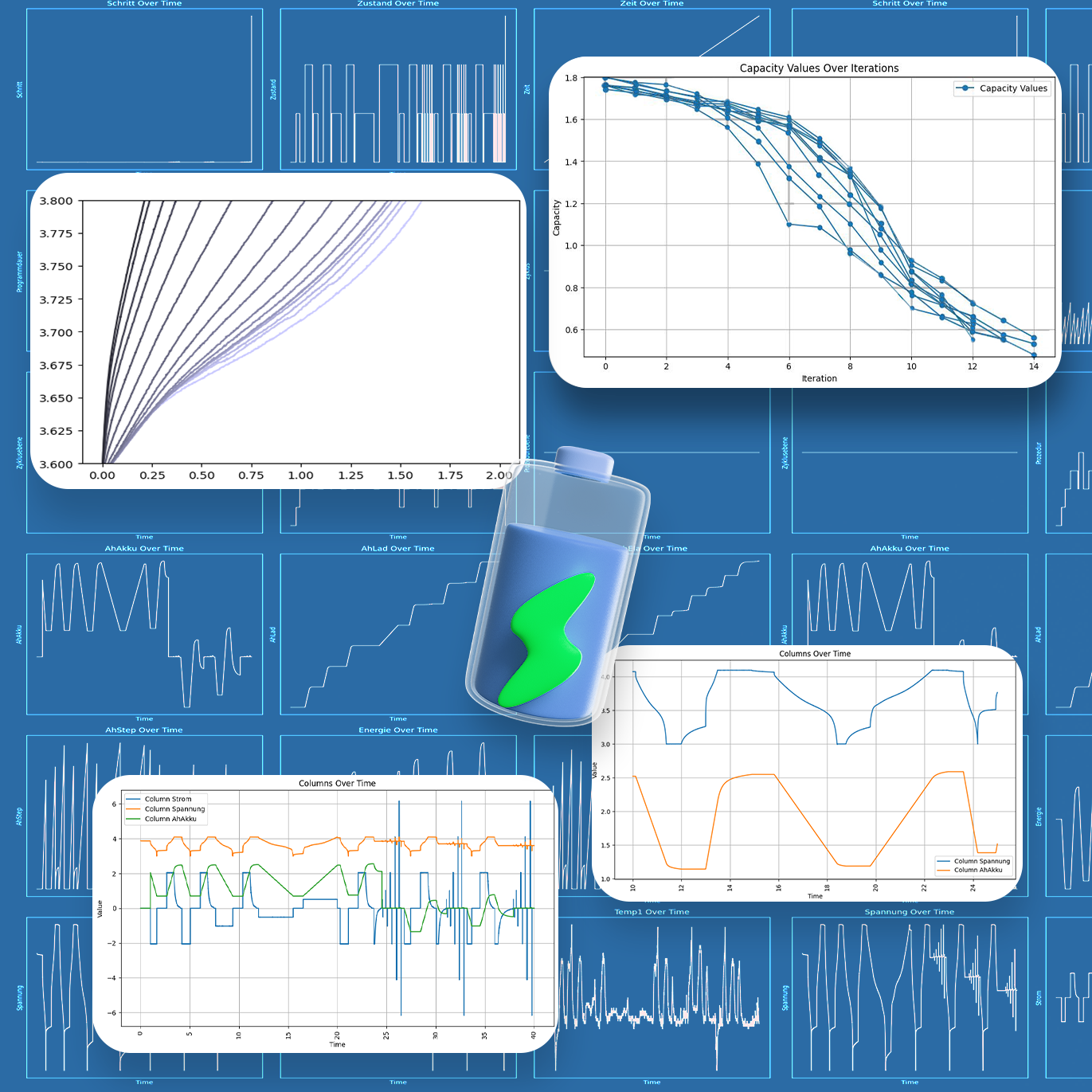
Battery Degradation Trajectory Prediction
-
Open Inventory
Introduction
Using the Qt framework and C++, Open Inventory is an open-source inventory management system. The system offers a complete solution for tracking and managing assets, to streamline and improve inventory management for enterprises.
My Role
- Custom menus for administrators, vendors, and customers provide an intuitive interface.
- Order Placement Made Easy: Enables users to place orders and generate invoices with ease.
- Effective Inventory Management: Provides a dedicated interface for suppliers, making it easier to add stock.
- Strong Control: User Administration: Effective Instruments for Managing Vendor and Customer Profiles.
- Financial analytics: Sturdy instruments that offer information on profit and loss to help with decision-making.
Technologies



Open Inventry
-
Hostel Management System
Introduction
The Hostel Management System is a comprehensive solution for managing hostel operations. It offers features for hostel booking, maintenance requests, user administration, and more. Developed in Java with an MVC architecture, it aims to streamline hostel management for administrators, students, and staff.
My Role
- Custom menus for administrators, maintenance staff, and students to ensure smooth system operation.
- Streamlined order placement for students to book hostels easily.
- Developed a user management system for handling administrator, staff, and student profiles effectively.
Technologies

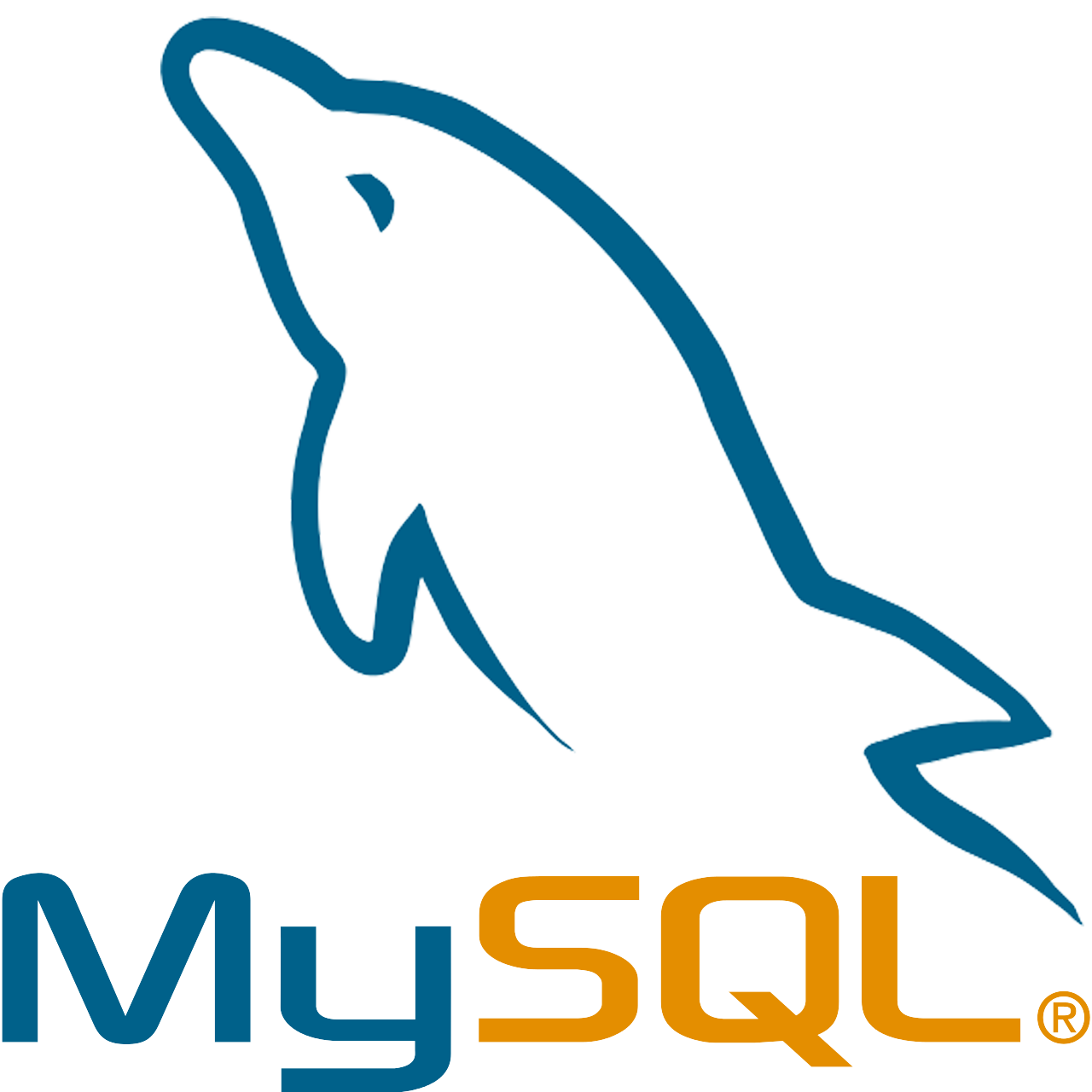
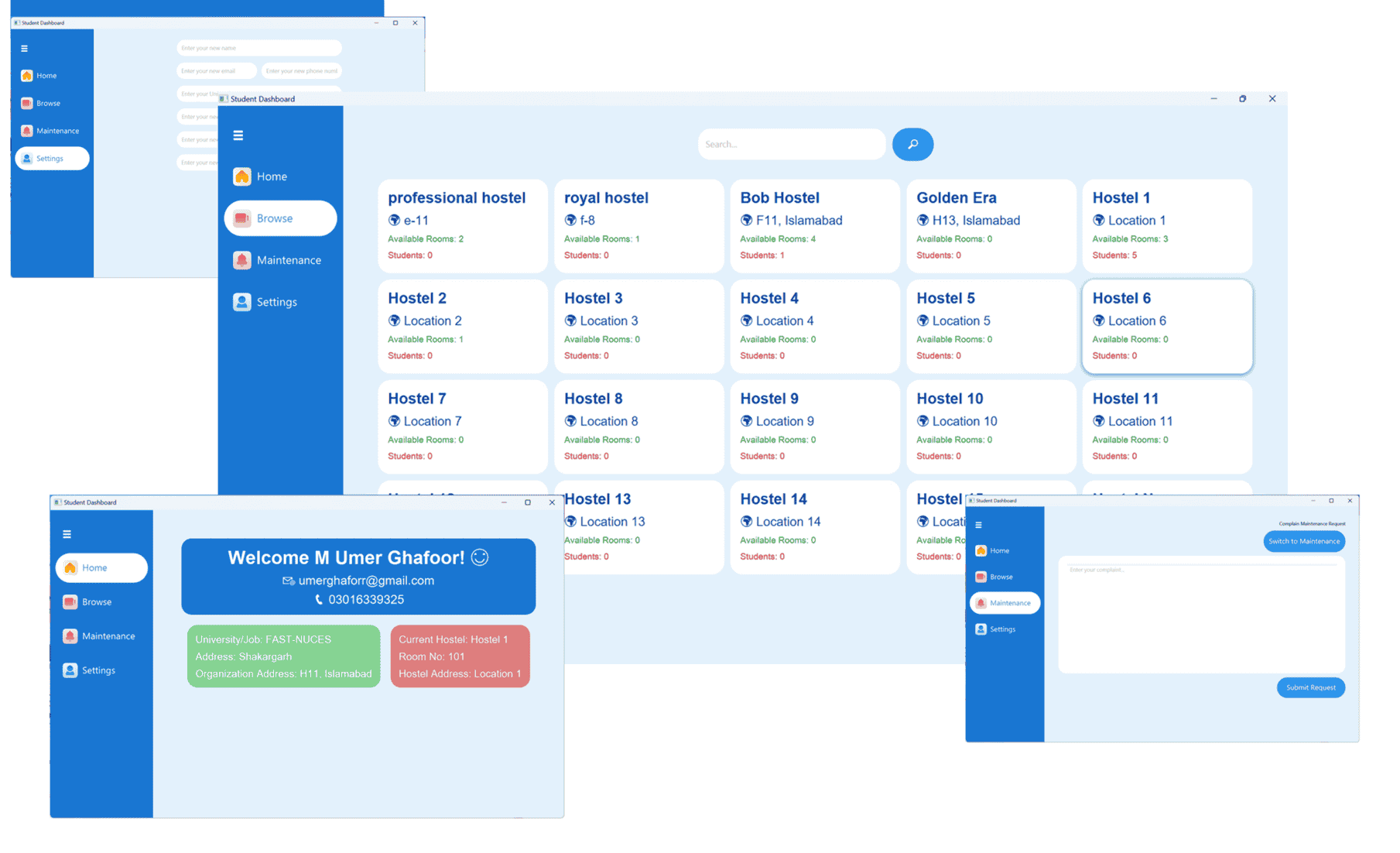

Hostel Management System
Other Projects
